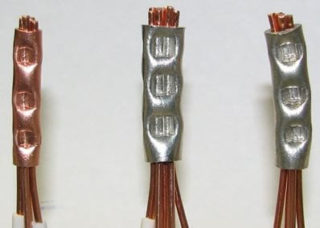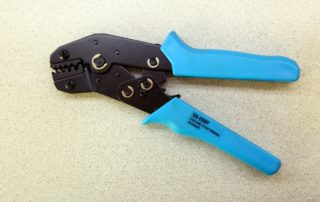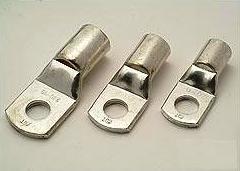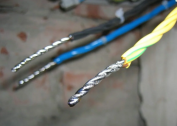Fused junction box housings, charred wires, impaired core integrity are consequences of neglecting a procedure such as cable termination. Without creating reliable contact with the device, you cannot be sure of the safety of electrical wiring. With the help of termination, it is possible to reduce the transition resistance, which causes the contacts to melt, to increase the reliability of the connection and increase its operating time. Methods for terminating wires are different, each of which has its positive and negative sides.
The danger of lack of termination
By termination is meant the process of processing and forming the core to create a solid connection with the device. When choosing methods for terminating wires and cables, it is important to understand how a particular material will behave and what needs to be done so that the contact is strong. The most important condition for the safety of the power grid is the creation of a reliable and high-quality contact between the conductor and the device to which it is connected. If the connection is poor, a short circuit or fire may occur. Unreliable contact leads to high transient resistance. It is inherently a resistor on which heat is generated. Increased heat leads to burning and melting of the wire.
The transition resistance must be disposed of. But this is a rather difficult task, which is prevented by the oxide film, a small contact area, and weak compression at the terminals of the switching device. You can only reduce the PS - in this case, the ending of the wire strands helps.
Termination Methods
There are rules for the installation of electrical installations (PUE), which govern the work with electromechanical equipment. According to these requirements, the master should know the following:
- Termination can be done by crimping, soldering, welding, special lugs and terminators for wires, sleeves.
- The best method for terminating aluminum with a cross-sectional area from 2.5 sq. Mm to 10 sq. Mm is to bend the end of the core into a ring.
- Aluminum conductors with a large cross section are terminated with crimped or welded ferrules (for cross sections from 240 sq. Mm.).
- The aluminum wire must be lubricated with special grease at the termination point so that there is no contact with air. Otherwise, oxidation will form, leading to destruction of the conductor and contact.
- Copper wires up to 10 sq. Mm. bend into a ring, but first you need to solder them. Banding of wires will help to create good contact and protect the wires from fire.
The most popular way to create terminations is to use various tips. They come in different types, vary in material, purpose, size, characteristics, class.
Wire preparation technology
You can complete the termination yourself with a special tool. The technology is simple - just take the tip, put it all the way on the conductor and squeeze. The number of clamps can be different - the crimping of a matrix with a point contact is carried out in two or more places, and one crimp is enough for the sleeves. Several crimping is necessary for more reliable contact, reducing the transition resistance and increasing mechanical strength.
Crimping by professional craftsmen is carried out using an expensive special tool. It is unprofitable for a home professional to buy such a device, so they choose other options.As an alternative, a stripper for stripping the insulation with a press or a crimper (a special crimp) can act. All devices can be bought at a conventional construction or electrical installation store.
There are solder tips. Then the termination is carried out in two stages - the stripped core is placed in the tip and solder is poured into the hole. This is a more reliable and high-quality method, which is often used in electrical wiring.
Types of tips
You can quickly terminate a cable or wire using special lugs. Their range is diverse - there are lugs for aluminum and copper wiring, for single-wire and multi-wire conductors. Each product has its own marking in accordance with GOST, according to which you can understand the purpose and characteristics of the electrical device, as well as climatic operating conditions.
Tips for copper wires TTM and TML
Stranded copper conductors can be terminated with special tips from a copper pipe drilled under a bolt. There are two modifications of such devices - uncoated and tinned. They are also marked as ТМ (ТМЛ), after which the wire cross-section is clamped in millimeters and the diameter of the tip hole in mm. Fastening of such clamps is carried out by crimping using special pliers. Using ordinary pliers or a hammer is not recommended, otherwise the mechanism may be damaged. The number of crimps should be two or more for a reliable installation.
These tips can also be used for single-wire conductors. It is only important to choose the right size, as otherwise the core may break off. Before installation, the ends are cleaned from the insulating layer and oxide to a characteristic metallic luster.
The scope of such products is quite wide. They can be found in the connection of cable risers on the distribution input device in the entrance, in the grounding of metal junction boxes, the connection of electric stoves, a branch. Also actively used in industry.
For termination, wires and cords with a cross section from 2.5 sq. Mm to 240 sq. Mm are suitable.
TML tips are best used in compounds in which there must be a high corrosion resistance.
TML (o)
A less used modification of TML tips is a crimping device with a control window that allows the wizard to see the process of installing the conductor in place.
Such products are also mounted by soldering. The scope is industry. They are practically not used in everyday life, so many home electricians and specialists in the field of housing and communal services do not even have an idea about the existence of such devices.
THERE
TAM aluminum and copper lugs for cables are used to connect aluminum wiring to copper busbars on input and distribution devices. The product is a two-metal tip, in which the shank is made of aluminum, and the body itself is made of copper. The transition resistance is absent due to frictional diffusion. Mounting method - crimping.
TA
Used for aluminum wires. Outwardly similar to products of the TM brand, but made of another material. They have a minimum size of 16 sq. Mm.
The connection and termination of the conductors of wires and cables made of aluminum can be made only with the use of quartz-vaseline lubricant, which prevents the formation of oxide on the surface. Thanks to it, contact with air is reduced.
Other types of tips
Copper wires in household appliances are often terminated with copper tips for soldering. Devices have special "ears" that allow you to securely fix the conductor. These products include the PM brand, in which the “ears” are brought together in a production version. They are used for wires with a cross section of 2.5 square mm.
Reducing the size of switching devices, protective equipment has led to a change in the size of the clamps. For this reason, the terminal end of the NShP pin wire is increasingly being used.
In industry, cable bolt and mechanical terminals of NB are actively used. With their help, power cables with a cross section from 25 sq. Mm to 240 sq. Mm are terminated. They are made of aluminum alloy and have good corrosion resistance. To create tightness, a heat shrink tube is included.
The assortment of tips is very diverse, you can always find a device for this type of conductor, but many use homemade ones. Such products have an important advantage - the ability to create a tip for any size. They can be made quite simply - a tube of the desired material is required, it is flattened from one end, and then a hole is drilled in it. Home-made devices are used in grounding devices.
In the case of a self-made product, the current load is unknown. For this reason, it is not recommended to use them in industry and at high capacities.









